
The Endangered Species Act of 1973 is the primary law in the United States for protecting imperiled species. Designed to protect critically imperiled species from extinction as a "consequence of economic growth and development untempered by adequate concern and conservation", the ESA was signed into law by President Richard Nixon on December 28, 1973. The U.S. Supreme Court called it “the most comprehensive legislation for the preservation of endangered species enacted by any nation". The purposes of the ESA are two-fold: to prevent extinction and to recover species to the point where the law's protections are not needed. It therefore “protect[s] species and the ecosystems upon which they depend" through different mechanisms. For example, section 4 requires the agencies overseeing the Act to designate imperiled species as threatened or endangered. Section 9 prohibits unlawful ‘take,’ of such species, which means to “harass, harm, hunt...” Section 7 directs federal agencies to use their authorities to help conserve listed species. The Act also serves as the enacting legislation to carry out the provisions outlined in The Convention on International Trade in Endangered Species of Wild Fauna and Flora (CITES). The Supreme Court found that "the plain intent of Congress in enacting" the ESA "was to halt and reverse the trend toward species extinction, whatever the cost." The Act is administered by two federal agencies, the United States Fish and Wildlife Service (FWS) and the National Marine Fisheries Service (NMFS). FWS and NMFS have been delegated the authority to promulgate rules in the Code of Federal Regulations to implement the provisions of the Act.

The conservation status of a group of organisms indicates whether the group still exists and how likely the group is to become extinct in the near future. Many factors are taken into account when assessing conservation status: not simply the number of individuals remaining, but the overall increase or decrease in the population over time, breeding success rates, and known threats. Various systems of conservation status exist and are in use at international, multi-country, national and local levels as well as for consumer use.

The Sumatran water shrew is a red-toothed shrew found only in the Padang highlands of western Sumatra, Indonesia. Its natural habitats are streams in montane forests. The species is only known from a holotype, which is damaged, and was previously listed as critically endangered by IUCN. It is believed to be severely threatened by habitat loss.
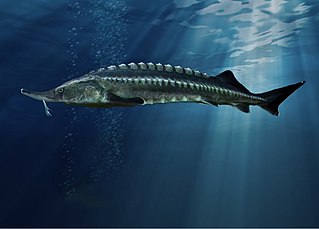
An IUCN Red List Critically Endangered (CR) species is one that has been categorized by the International Union for Conservation of Nature as facing an extremely high risk of extinction in the wild. As of 2021, there are 6,811 species that are considered to be Critically Endangered. This is out of the 120,372 species currently tracked by the IUCN.
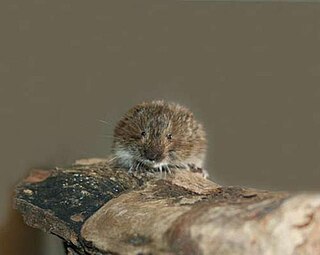
The Tatra pine vole, also called the Tatra vole or Tatra ground vole, is a species of vole endemic to the Carpathian mountain range in Slovakia, Poland, Ukraine and Romania. Two subspecies have been recognised. M. t. tatricus occupies the western part of the range in Slovakia and Poland, and M. t. zykovi is found in Ukraine and Romania.
The Komodo rat is a species of rodent in the family Muridae found only in the Lesser Sunda Islands of Indonesia, in Rintja, Padar, Lomblen, and Pantar islands. Its natural habitat is subtropical or tropical dry forests. It is threatened by habitat loss.
The delectable soft-furred mouse or East African praomys is a species of rodent in the family Muridae. It is found in Kenya, Malawi, Mozambique, Tanzania, and Zambia. Its natural habitat is subtropical or tropical moist montane forests. It is threatened by habitat loss.
The Cameroon soft-furred mouse or Cameroon praomys is a species of rodent in the family Muridae. It is found in Cameroon and Equatorial Guinea. Its natural habitat is subtropical or tropical moist montane forests. It is threatened by habitat loss.
The gray-tailed narrow-headed rat is a species of rodent in the family Muridae. It is found only in Ethiopia. Its natural habitats are subtropical or tropical moist montane forests, subtropical or tropical high-altitude shrubland, and subtropical or tropical high-altitude grassland. It is threatened by habitat loss.

Villa's gray shrew is a shrew native to northeastern Mexico, where it is called musaraña.
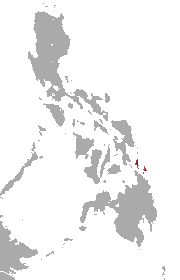
The Dinagat gymnure is a species of mammal in the family Erinaceidae. It is endemic to the Philippines.

Flower's shrew is a species of mammal in the family Soricidae. It is endemic to Egypt. Its natural habitat is arable land. It is threatened by habitat loss.
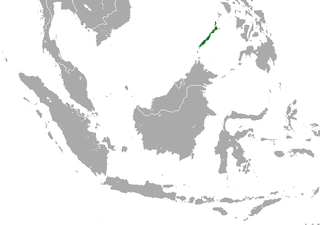
The Palawan shrew is a species of mammal in the family Soricidae. It is endemic to the Philippines and known from Palawan and Balabac Islands, from sea level to 1,300 m (4,300 ft) asl. It occurs in old growth and scrubby secondary forest. Habitat loss (deforestation) is a potential threat to this little known species, although it seems to tolerate habitat loss and modification.

Kihaule's mouse shrew is a species of mammal in the family Soricidae endemic to Tanzania where it is known only from the Udzungwa Mountains, at the western end of the Eastern Arc Mountains. Its natural habitats are subtropical or tropical moist montane forests and plantations. It is threatened by habitat destruction and the International Union for Conservation of Nature has assessed its conservation status as being "endangered". It was named after Philip M. Kihaule, a medical-entomological technician, who considerably contributed to the documenting of the small mammals of Tanzania and collected the type specimen of this shrew.
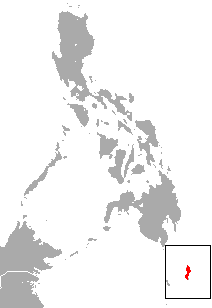
The Talaud flying fox or Talaud fruit bat is a species of bat in the family Pteropodidae. It is endemic to the islands of Salebabu and Karekaleng in the Talaud Archipelago of Indonesia. Its natural habitat is subtropical or tropical swamps.

The western naked-backed fruit bat is a species of megabat in the family Pteropodidae. It is endemic to Indonesia. Its natural habitat is subtropical or tropical dry forests. It is threatened by habitat loss.

Veldkamp's dwarf epauletted fruit bat is a species of bat in the family Pteropodidae. It is monotypic within the genus Nanonycteris. It is found in Benin, Cameroon, Central African Republic, Ivory Coast, Ghana, Guinea, Liberia, Nigeria, Sierra Leone, and Togo. Its natural habitats are subtropical or tropical moist lowland forest, subtropical or tropical mangrove forest, subtropical or tropical moist montane forest, dry savanna, and moist savanna. It is threatened by habitat loss.

The Nicobar flying fox is a species of flying fox in the family Pteropodidae. It is endemic to India. Its natural habitats are subtropical or tropical moist lowland forest and subtropical or tropical swamps. It is threatened by habitat loss due to forest clearing.

The Philippine gray flying fox is a species of flying fox in the family Pteropodidae. It is found in Indonesia and the Philippines. Its natural habitat is subtropical or tropical dry forests. It is threatened by habitat loss.

The Christmas Island shrew, also known as the Christmas Island musk-shrew is an extremely rare or possibly extinct shrew from Christmas Island. It was variously placed as subspecies of the Asian gray shrew or the Southeast Asian shrew, but morphological differences and the large distance between the species indicate that it is an entirely distinct species.
















